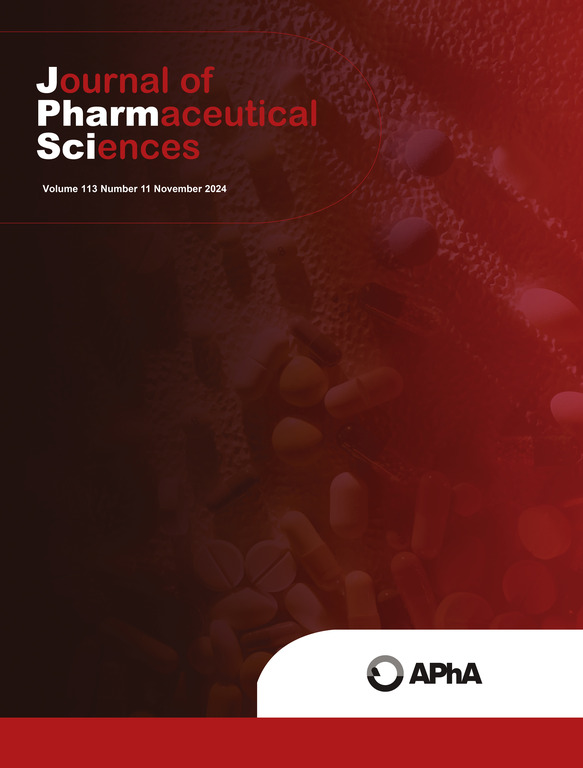基于生理的唑尼沙胺药代动力学耦合模型预测妊娠和产后孕妇、胎儿和新生儿人群的暴露和剂量探索
IF 3.8
3区 医学
Q2 CHEMISTRY, MEDICINAL
引用次数: 0
摘要
唑尼沙胺(ZNS)是第二代抗癫痫药物。妊娠期间,ZNS清除率增加,导致药物浓度降低。此外,ZNS可通过母亲和母乳转移给胎儿和新生儿,对胎儿和新生儿构成潜在风险。由于伦理约束,临床试验很难进行,数据也有限。本研究使用PK-Sim®和MoBi®建立了基于生理的药代动力学(PBPK)耦合模型,预测孕期和产后孕妇、胎儿和新生儿人群中ZNS的暴露。采用临床药代动力学(PK)数据对模型进行评价,并进行剂量探索。在发达的非妊娠、妊娠、胎儿、产后和新生儿模型中,观察到的浓度分别约为98.56%、95.24%和100%(胎儿/产后/新生儿)在2倍误差范围内。对于第一、第二和第三孕期,剂量调整到基线的0.92、1.17和1.5倍(建议维持剂量300 mg QD)是最小有效剂量(MED,接近治疗药物监测最小有效范围10 μ g/ml的暴露水平),而调整到基线的1.17、1.5和1.92倍是与基线相比的正常化剂量。在妊娠晚期给药方案下,产后剂量调整至基线的1.17倍为MED, 1.58倍为标准剂量。新生儿相对婴儿剂量(RID)为30 - 33%。不建议产后新生儿立即母乳喂养。成功建立了ZNS - PBPK耦合模型,研究了特殊人群在孕期和产后的暴露情况,并优化了给药方案。本文章由计算机程序翻译,如有差异,请以英文原文为准。
Physiologically based pharmacokinetic coupled model of zonisamide to predict the exposure and dose exploration in maternal, fetal, and neonatal populations during pregnancy and postpartum
Zonisamide (ZNS) is a second-generation antiepileptic drug. During pregnancy, ZNS clearance increases, leading to a decrease in drug concentration. Additionally, ZNS can be transferred to the fetus and neonate through the mother and breast milk, potentially posing risks to the fetus and neonate. Due to ethical constraints, clinical trials are difficult to conduct and data are limited. This study used PK-Sim® and MoBi® to develop a physiologically based pharmacokinetic (PBPK) coupled model predicting the exposure of ZNS in maternal, fetal, and neonatal populations during pregnancy and postpartum. The model was evaluated with clinical pharmacokinetic (PK) data, and dosage explorations were conducted. In the developed non-pregnant, pregnant, fetal, postpartum, and neonatal models, approximately 98.56 %, 95.24 %, and 100 % (fetal/postpartum/neonatal) of the observed concentrations fell within the 2-fold error range, respectively. For the first, second, and third trimesters, dose adjustments to 0.92, 1.17, and 1.5 times the baseline (the recommended maintenance dose of 300 mg QD) are the minimum effective doses (MED, exposure levels close to therapeutic drug monitoring minimum effective range of 10 µg/ml), while adjustments to 1.17, 1.5, and 1.92 times the baseline are normalized doses compared to baseline. Under the third trimester dosing regimen, postpartum dose adjustment to 1.17 times the baseline is the MED, while 1.58 times the baseline is normalized dose. Relative infant dose (RID) of neonates is 30–33 %. Immediate breastfeeding is not recommended for neonates postpartum. The ZNS PBPK coupled model was successfully developed, studying exposure in special populations during pregnancy and postpartum, and optimizing dosing regimens.
求助全文
通过发布文献求助,成功后即可免费获取论文全文。
去求助
来源期刊
CiteScore
7.30
自引率
13.20%
发文量
367
审稿时长
33 days
期刊介绍:
The Journal of Pharmaceutical Sciences will publish original research papers, original research notes, invited topical reviews (including Minireviews), and editorial commentary and news. The area of focus shall be concepts in basic pharmaceutical science and such topics as chemical processing of pharmaceuticals, including crystallization, lyophilization, chemical stability of drugs, pharmacokinetics, biopharmaceutics, pharmacodynamics, pro-drug developments, metabolic disposition of bioactive agents, dosage form design, protein-peptide chemistry and biotechnology specifically as these relate to pharmaceutical technology, and targeted drug delivery.

 求助内容:
求助内容: 应助结果提醒方式:
应助结果提醒方式:


